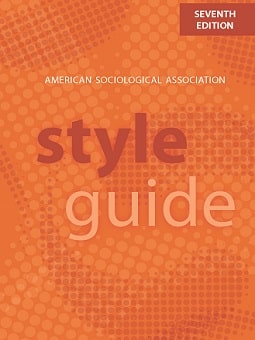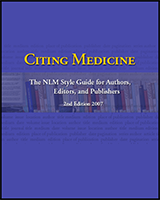Overview
The way that citations appear depends on the citation style, which is a set of established conventions for documenting sources. There are different sets of conventions for different fields of study and scholarship.
On this page are links to guidance for many of the most common styles. For assignments, when in doubt, consult with your instructor.
On the guide's navigation menu, you will find links to other valuable information about citation:
- Confused about why we cite and why there are different styles?
- Looking for information about which online citation generators to use and how to use them effectively?
- What should I do when using generative AI tools?
- How do I use software to help organize my sources and cite them correctly?
APA
-
Excelsior OWL: APA StyleGuide to APA style by Excelsior University's OWL; includes descriptions, examples, and exercises.
-
APA Style: Style and Grammar GuidelinesAdditional guidance provided directly by the APA.
-
Purdue OWL: APA Style GuideA comprehensive guide to producing APA-style citations and following general formatting expectations.
-
Publication Manual of the American Psychological Association (7th ed.) by
ISBN: 9781433832161Publication Date: 2020
MLA
-
Excelsior OWL: MLA StyleExcelsior University's guidance for using MLA style, including examples and exercises to test understanding.
-
MLA Style CenterAdditional resources and updates provided by the MLA.
-
Purdue OWL: MLA Formatting and Style GuideComprehensive guide to MLA citations and general formatting.
Chicago
Note: The 18th edition of the Chicago Manual of Style was published in September 2024. Some external guides have not yet been updated. Confirm with faculty about citation expectations.
-
Excelsior OWL: Chicago StyleExcelsior University's discussion of Chicago citation style with examples and templates.
-
Purdue OWL: CMOS Formatting and Style GuideA comprehensive guide to using the Chicago Manual of Style; includes guidance, examples, and instructional materials.
-
The Chicago Manual of Style OnlineThe online portal to the Chicago Manual of Style. Free for UConn students and staff.
-
-
-
A Manual for Writers of Research Papers, Theses, and Dissertations (9th ed.) by
ISBN: 9780226494425Publication Date: 2018Note: This edition corresponds with the 17th edition of the CMOS.
Other Citation Styles
-
UConn Pharmacy Subject Guide: Citation ManagementUpdated AMA guidance with examples developed by our liaison to the UConn School of Pharmacy, Roslyn Kohlbrecher.
-
Purdue OWL: AMA StyleGuide to AMA-style reference list entries and in-text citation.
-
Purdue OWL: ASA StyleThe Purdue OWL's guide to American Sociological Association formatting and citation style (describing 5th edition guidance).
-
 American Sociological Association Style Guide (7th ed.)
by
ISBN: 9780912764580Publication Date: 2022
American Sociological Association Style Guide (7th ed.)
by
ISBN: 9780912764580Publication Date: 2022
-
Purdue OWL: Associated Press StyleOutline of AP style provided by the Purdue OWL.
-
Purdue OWL: Bluebook Citation for Legal MaterialsA brief guide to legal citation using The Bluebook as found in the CMOS.
-
Cornell LII: Basic Legal CitationAn open-access instructional work that includes discussion of Bluebook citational practices in a broader context and cross-references to official guidance.
-
CSUDH Citation Guide: CSE 9th ed.Guide developed by the CSU Dominguez Hills Library updated for the 9th edition of the CSE Manual.
-
The CSE-Style Citation Quick GuideQuick Guide for citation developed by the editors of the full CSE Manual.
-
GSA: Reference Guidelines and ExamplesOfficial guidance from the Geological Society of America regarding citation style, presented along with examples.
-
Citation Styles for the Sciences: GSA StyleGuide for GSA style developed by the University of South Carolina providing explanation and examples.
-
IEEE Editorial Style ManualGuidance provided directly by the IEEE for citation and writing style.
-
Purdue OWL: IEEE StyleOutline of formatting and citation guidance for IEEE style developed by the Purdue OWL.
-
Penn State Libraries: IEEE Quick Citation GuideGuide developed by the Penn State University Libraries outlining IEEE formatting requirements.
-
NLM Style: Citing Your SourcesGuide developed by USC Libraries providing explanation and examples of NLM citation styles.
-
 Citing Medicine: The NLM Style Guide for Authors, Editors, and Publishers (2nd ed.)
by
Publication Date: 2020Official guidance from the National Library of Medicine for citation and formatting.
Citing Medicine: The NLM Style Guide for Authors, Editors, and Publishers (2nd ed.)
by
Publication Date: 2020Official guidance from the National Library of Medicine for citation and formatting.
